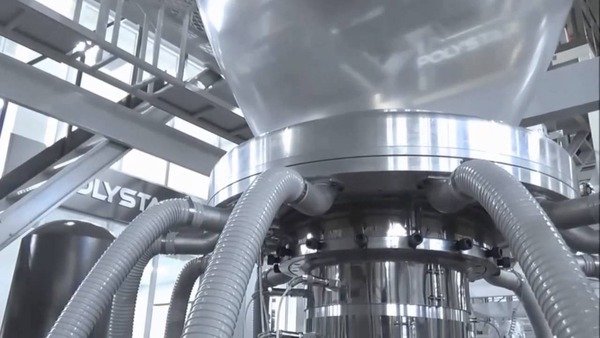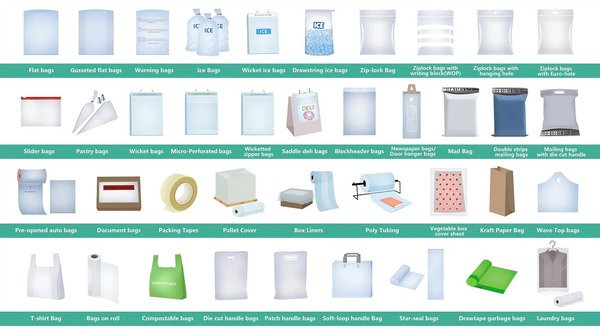
Are you seeing film that tears easily or has weird thick and thin spots? These issues can waste material and time. The blow-up ratio in your film extrusion process might be off, causing these exact headaches.
An incorrect blow-up ratio, either too high or too low, directly causes bubble instability, inconsistent film thickness, and weakened film properties. High ratios often lead to film tears, while low ratios can result in poor orientation and stiffness.
Getting the blow-up ratio (BUR) right is super important in blown film extrusion. It's the ratio of the final bubble's diameter to the die's diameter. If this ratio is too high, we're stretching the molten plastic too much. This can make the bubble unsteady, like trying to blow a giant soap bubble with too little soap. The film gets too thin in spots, making it weak and easy to rip. On the other hand, if the BUR is too low, the film isn't stretched enough. This might sound good, but it leads to its own set of problems, mainly with how the plastic molecules align.
When the BUR is too high, the film stretches excessively, especially in the transverse direction (TD). This overstretching thins the film significantly, reducing its overall strength and making it prone to splits or tears. The bubble itself can become unstable, oscillating or "breathing," which makes it hard to maintain consistent cooling and gauge. Conversely, a BUR that's too low doesn't provide enough biaxial orientation. The film might be thicker, but it can be stiff and have poor TD strength, making it less suitable for many applications that need flexibility and balanced toughness.
How does a high blow-up ratio specifically damage film quality?

We know a high BUR is bad news for film. But what are the exact ways it messes up the quality? It's not just one thing; it's a chain reaction of problems.
A high blow-up ratio primarily damages film quality by causing extreme thinning, leading to poor mechanical strength, especially tear and puncture resistance. It also results in an unstable bubble, creating significant variations in film thickness and potential web handling issues.
Severe Bubble Instability
When we push the BUR too high, we're asking a small amount of polymer from the die to stretch into a very large bubble.
- The Problem: The bubble can start to wobble, flutter, or even collapse. Think of it like an overinflated balloon that's about to pop. This instability means the film isn't being formed consistently.
- Why it Happens: There's too much air pressure for the amount of molten polymer, or the cooling isn't keeping up with the expansion. The die lip can no longer effectively stabilize the melt.
- Consequences: This leads directly to uneven cooling because parts of the bubble move closer or further from the air ring. This results in gauge bands and inconsistent properties.
Drastic Reduction in Mechanical Properties
The film's strength is directly related to how its molecules are oriented and its thickness.
- Tensile Strength: While TD strength might seem to increase due to high orientation, the film becomes very weak in the machine direction (MD). It also becomes excessively thin overall, reducing its load-bearing capacity.
- Tear Resistance: Highly stretched films, especially if there's an imbalance, tear very easily. A small nick can propagate quickly.
- Puncture Resistance: Thin spots created by the high BUR are weak points. Any sharp object can easily puncture the film.
Here's a simple look at how properties change:
| Property | Optimal BUR Film | High BUR Film |
|---|---|---|
| Overall Thickness | Consistent | Very Thin, Variable |
| MD Strength | Good | Poor |
| TD Strength | Good | May seem high, but brittle |
| Tear Resistance | Excellent | Very Poor, prone to splits |
| Puncture Strength | Good | Low, easily pierced |
| Bubble Stability | Stable | Highly Unstable |
Significant Gauge Variation
Gauge variation means the film's thickness isn't uniform across its width or along its length.
- What Causes It: Uneven stretching from an unstable bubble and inconsistent cooling are the main culprits with a high BUR. Some parts of the film get stretched more than others.
- Problems Downstream:
- Printing: Uneven thickness leads to poor print registration and inconsistent ink laydown.
- Sealing: Thin spots may not seal properly, or they might burn through. Thick spots can require too much heat.
- Bag Making: In our BagMec machines, inconsistent film causes issues with tension control, cutting, and sealing, leading to lower quality bags and more waste.
- Roll Geometry: Rolls won't be uniform, causing problems in further processing.
What are the main issues caused by a low blow-up ratio?
So, we've covered the "too high" scenario. But going too low with the BUR isn't a solution either. It brings its own set of distinct problems to your film production.
A low blow-up ratio mainly causes poor molecular orientation, especially in the transverse direction. This results in a film that can be stiff, have low TD tear strength, and exhibit a less desirable balance of properties for many applications.
Insufficient Molecular Orientation
Blown film needs biaxial orientation (stretching in both MD and TD) to achieve its desired properties.
- The Science Bit: When the BUR is low, the film doesn't get stretched much in the transverse direction as it travels upwards from the die. The long polymer chains don't align well in the TD.
- The Result: You get a film that might be strong along its length (MD) but relatively weak and easy to split across its width (TD). This imbalance is often undesirable.
- Why It Matters: Many bags need good TD strength to hold contents without splitting when pulled sideways or when handles are stressed.
Increased Film Stiffness and Poor Feel
While the film might be thicker with a low BUR, this isn't always a good thing.
- The "Boardy" Effect: Lack of TD orientation can make the film feel stiff, sometimes described as "boardy" or "papery." It lacks the desired flexibility and drape for many packaging uses.
- Handling Issues: Stiffer films can be harder to process in downstream equipment. They might not conform well around products in packaging applications.
- Customer Perception: For consumer goods, the feel of the packaging film is important. A stiff, crinkly film might be perceived as lower quality.
Potential for Specific Types of Instability and Defects
While high BUR instability is more dramatic, low BURs can also have stability issues.
- "Breathing" or "Pulsating" Bubble: Sometimes, at very low BURs, the bubble can show a slow, rhythmic expansion and contraction. This affects cooling and can lead to subtle gauge bands.
- Interfacial Instability (Coextrusion): In coextruded films, a low BUR can sometimes promote instability between layers, especially if there are significant differences in melt viscosity. This can lead to a wavy interface or delamination. This isn't as common a problem as general bubble instability, but it's one we watch for especially in laminated pouch production.
- Weld Line Weakness: Though not solely a BUR issue, poor melt conditions sometimes associated with trying to run too low a BUR can contribute to weaker weld lines in the finished bags if the material isn't properly homogenized and mixed before exiting the die.
How do we find the sweet spot for the blow-up ratio in our BagMec machines?
Finding that perfect blow-up ratio isn't about a magic number. It's about balancing several factors to get the best film for your specific bags, using reliable machinery.
To optimize the BUR, we consider the resin type, desired film properties (like strength and clarity), and the final bag application. Our BagMec machines are designed for stable operation across a practical BUR range, with precision controls to help producers fine-tune it.
At BagMec, we have years of experience helping customers get this right. Here's how we approach it:
Key Factors We Consider
-
Polymer Type: Different plastics behave differently.
- LDPE: Generally forgiving and can run at a wide range, often 2:1 to 4:1.
- LLDPE: Offers better strength but can be trickier. Usually, BUR is kept a bit lower, maybe 1.8:1 to 3:1, to maintain stability.
- HDPE: Needs a higher BUR, often 3:1 to 5:1 or even more, to develop its characteristic stiffness and strength.
- PP (Polypropylene): Can also require higher BURs, similar to HDPE, especially for applications needing good clarity.
Here's a general guide, but always check resin data sheets:
Polymer Material Typical BUR Range Key Characteristics Influenced by BUR LDPE 2.0:1 – 4.0:1 Good balance of properties, flexible LLDPE 1.8:1 – 3.0:1 Puncture resistance, dart impact HDPE 3.0:1 – 5.0:1+ Stiffness, barrier, tensile strength PP 3.0:1 – 6.0:1 Clarity, stiffness (often water q.) Biodegradable PLA 2.0:1 - 3.5:1 Brittleness, orientation balance -
Desired Film Properties:
- Are you making strong heavy-duty bags? You'll need good puncture and tear strength, which means a balanced BUR.
- Is clarity paramount for food packaging? Some BURs optimize this better.
- Do you need a very soft film or a stiffer one? This also guides BUR selection.
-
End Application:
- T-shirt bags need good MD strength for handles.
- Garbage bags need excellent puncture and tear resistance.
- Courier bags require toughness and often security features. Our BagMec courier bag machines are designed for this.
The Role of BagMec Machine Design
Our machines are built with BUR optimization in mind.
- Die Design: Precision-engineered dies ensure uniform melt flow, which is the foundation for a stable bubble. The die gap is also a factor.
- Air Ring: Efficient and consistent cooling from the air ring is crucial. Our designs aim for even airflow around the bubble.
- "Smart Tension Control": While this BagMec patented technology primarily helps with film feeding later on, a stable extrusion process from the start makes achieving and maintaining the target BUR easier. When the take-up speed is steady and reliable, it helps stabilize the entire upstream process, including the bubble.
- Automation Levels: PLC controls and touchscreen interfaces on our machines allow for precise adjustments to air flow and take-up speed, which are key to managing BUR.
Practical Steps for Optimization
- Start with Resin Supplier Data: They usually provide a recommended BUR range.
- Make Small Adjustments: Change the air volume or take-up speed slowly and observe the bubble. Look for stability and clarity.
- Test the Film: Check thickness uniformity. Do basic tear and stretch tests. For critical applications, lab tests for tensile strength, dart impact, and tear resistance are essential.
- Listen and Learn: We provide training and support. Our technicians can help you dial in the optimal settings for your specific materials and BagMec machine model.
Finding the sweet spot is an iterative process. It requires careful observation, methodical adjustments, and good communication between machine operators and quality control.
Conclusion: Mastering Blow-Up Ratio for Quality Bags
Getting the blow-up ratio right is critical for producing high-quality film and, ultimately, reliable bags. Too high or too low will cause problems. At BagMec, our machines are engineered to help you achieve and maintain that optimal BUR for superior results.






